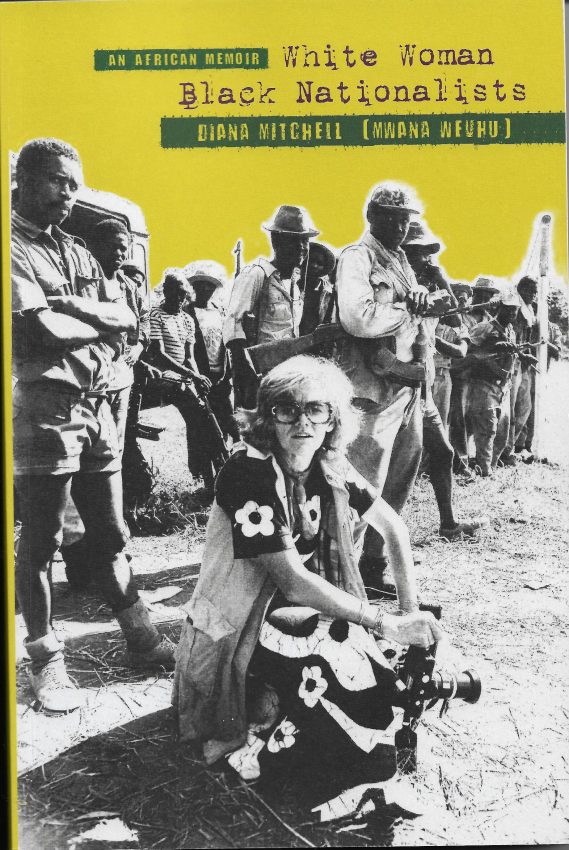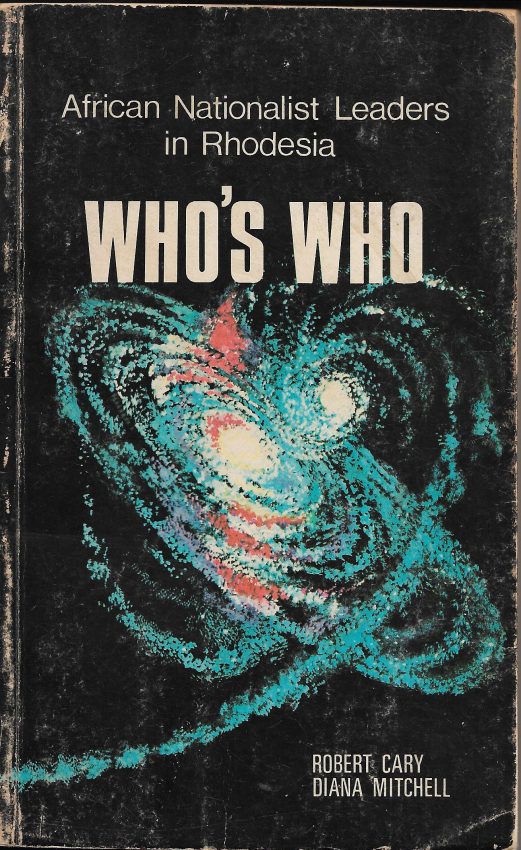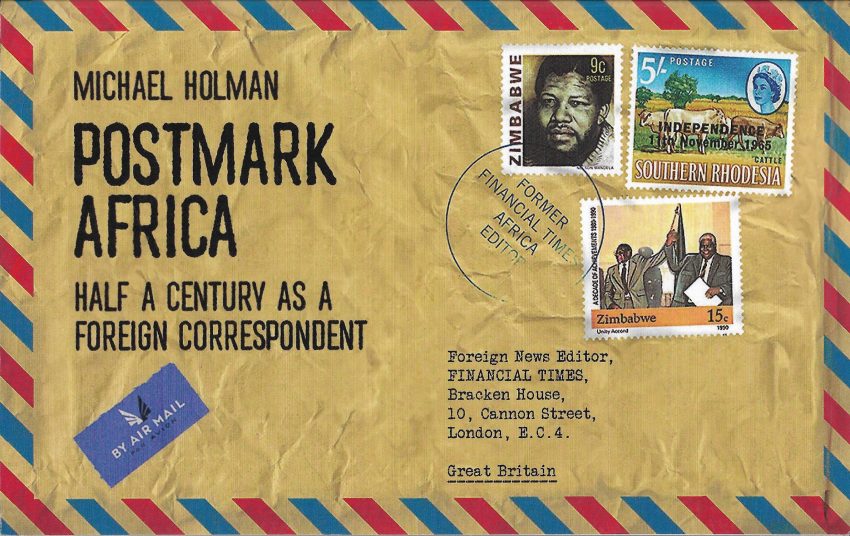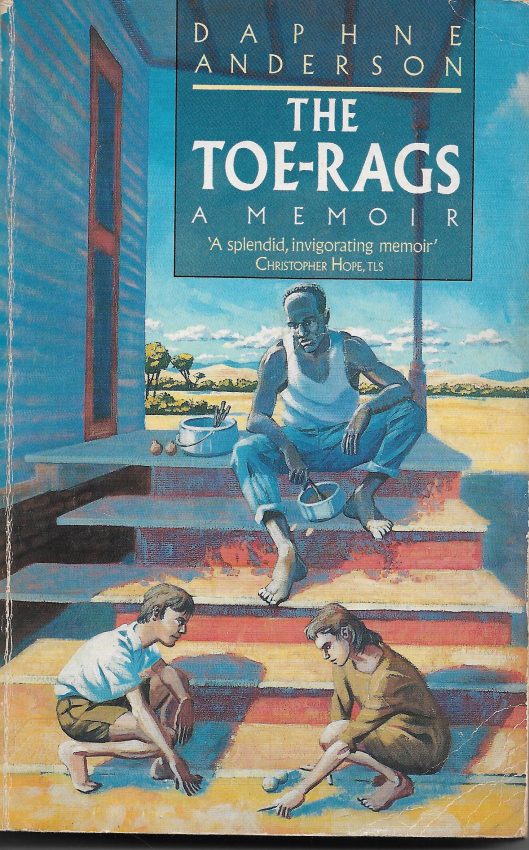Diana Mitchell – an important Zimbabwean journalist and archivist

I was delighted to be told of Diana Mitchell’s memoir and bought it immediately. Its 300 pages are densely packed with Diana’s personal and political life over the period when Rhodesia became Zimbabwe. It isn’t a quick read for me – every page contains so much that relates to my life and experience in powerful ways that I do have to take it slowly so that I’m not overwhelmed by the weight of her information. The strongest emotion I have is a deep regret that I never got to meet Diana. We were divided by a border and a war, but not by shared values or interests.
Crossing borders and encountering Diana’s Who’s Who book

1979 and 1980 were very exciting years for me – and everyone -in Zambia. The Heads of the Commonwealth Conference was held in Lusaka. I met Margaret Thatcher and curtsied to Queen Elisabeth, but best of all was the pop-up restaurant and bar that a friend organised in her garden for all the visiting journalists and the ‘spies’ from the various embassies. What we really wanted to talk about was what was going to take place in Rhodesia/Zimbabwe as the liberation war ended and elections were planned. Who would win the election? What would South Africa do? There were many conflicting predictions and opinions, but one huge problem was access to facts about who the Zimbabwe nationalists were. I often crossed the border from Zambia to Zimbabwe to visit my family and I would always visit the bookshops that sold books opposing Prime Minister Ian Smith’s racist regime. I saw and grabbed at Diana Mitchell and Robert Cary’s African Nationalist Leaders in Rhodesia WHO’S WHO. At last an invaluable and essential source of information.
Independence Day, Zimbabwe 1980

I couldn’t get into the stadium in Harare when Zimbabwe gained its Independence. Instead, thanks to the generosity of my friend, the journalist, Michael Holman, I was able to watch the event on TV in his home in Harare. For me as for many others opposed to the racist regimes of Rhodesia and South Africa, this was a time of great celebration and hope. As Diana writes, this hope was soon to be dashed by Mugabe’s brutal massacres of the Ndebele and suppression of the ZAPU party of Joshua Nkomo. This is also the moment to acknowledge the courage and the enormous importance of the work done by journalists to bring us news and information. Diana Mitchell was given a PEN award for the Who’s Who book. The 3rd of May this week is also World Press Freedom Day an important day for civil rights and human liberty which we must all defend. Michael Holman’s book ‘Postmark Africa‘ documents his reporting of these times.
White liberals and white privilege

Diana mentions South African spies and disinformation in her memoir. Those were difficult days. It wasn’t necessarily safe to express political opinions openly. People were made prohibited immigrants in both Zambia and Rhodesia, Friends became enemies. Both sides of the liberation war were dirty and murderous. Negotiating relationships when information was in short supply was difficult. Fighting racism and inequality was the ideal, but the region was a political minefield and trust was in short supply when lives were at stake. The Lusaka Declaration on Racism and Racial Prejudice was very significant. Diana and I were both privileged by the colour of our skin. In fact, as we both personally experienced, whites did experience quite extreme poverty, especially during the Great Depression. The British Government dealt with inequality and poverty at home by sending their citizens to their colonies and by denigrating indigenous populations. This amounted to colonial government sanction for racism and inequality, but not everyone became a racist. As another important and wonderful book on this subject, ‘The Toe-Rags’ by Daphne Anderson, shows. Poverty and hardship can make people empathetic and principled and anti-racist, though in most cases it also helps if they can overcome disadvantage by a good education, as was the case for Diana and me.
Other connections between Diana Mitchell and myself
Another interesting connection with Diana is that she organised two Triangle Pachipamwe International Artists Workshops. I drove a Zambian artist, Adam Mwansa to the 1990 workshop held at Marondera near my childhood home at Wedza, but I never met her. Through my work at Mpapa Gallery, and with the Mbile Workshops, I also knew Robert Loder and, at an earlier time, Frank McEwen at the Zimbabwe National Art Gallery. Judith Todd, Garfield Todd’s daughter, was at school in Harare at the same time as me and was already committed to anti-racism. Like Diana, I was at the University of Cape Town, although a decade later. I also recall an incident on Rhodesia Railways. I was returning early for the holidays, as I had to earn money for my train fare and living expenses at UCT, when the steward asked me if I minded sharing my coupe with another woman. I couldn’t understand why I needed to agree until I realised the woman was mixed-race. I was deeply ashamed that she was subjected to the humiliation of needing my permission when she was older than me. That was Rhodesia then! Whites were treated as superior.
I have written about these issues too but through fiction, memoirs, poetry and novels – you can see my books here. Diana Mitchell’s will remain an essential archive for anyone wanting to learn about and understand the history of Zimbabwe. she deserves to be recognised and remembered for her invaluable work.
2 Comments on “White Woman, Black Nationalists – Diana Mitchell’s Memoir”
I first met Di when we both started work at UZ on the same day in 1985 and spent the “orientation day” together.
Thank you for your comment, Roger. I am sure that you have much to add of value on this post.